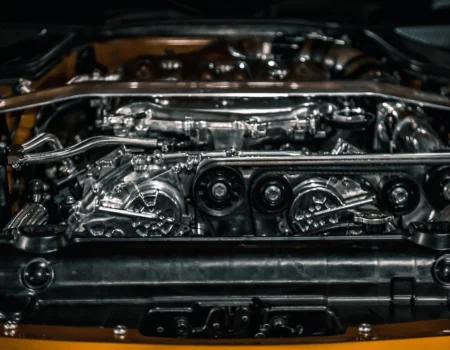Remain profitable and avoid profit leakage.
The automotive industry faces significant pricing pressure. While some brands compete on price, others focus on quality service and operational efficiency to remain profitable. A key challenge is controlling costs without compromising dealer and customer satisfaction.
For instance, managing recalls, warranty reconciliations, and tracking the profitability of individual models – including pre-sales, sales, and after-sales services – can highlight whether certain vehicles are worth selling. This visibility is crucial to avoid profit leakage.
Cost optimization plays a critical role here. By aligning stock levels with customer requirements, brands can reduce overstocking and deliver more tailored solutions. Logistics optimization, such as shipping to the nearest port and minimizing interstate transport costs, further trims expenses.
Equally important is improving demand planning. With better insight into dealer orders, customer trends, and inventory – both at your warehouses and at dealers – companies can refine forecasts for sales, liquidity, and working capital. This not only ensures smoother operations but also secures more favorable financial terms from institutions, such as lower interest rates on loans.
SAP VMS is a critical enabler of this profitability. Designed to maintain a single source of truth for each vehicle throughout its lifecycle, VMS isn’t a replacement for SAP’s core modules like SD or MM. It complements them, addressing gaps that are critical for the automotive sector. Whether the “vehicle” is a motorbike, yacht, agricultural equipment, or mining machinery, VMS provides the foundation for advanced solutions like Digital Vehicle Hub and eCommerce platforms.
By optimizing delivery accuracy and customer satisfaction through VMS, brands enhance loyalty, streamline operations, and ultimately protect their bottom line. However, if maintaining a high-quality customer and dealer experience isn’t a priority, then implementing VMS might not be the right choice.
In an industry as dynamic as automotive, staying profitable requires the right tools, data, and strategies – and SAP VMS ensures brands remain ahead of the curve.
Why a Central Cockpit?
A central cockpit streamlines vehicle tracking and operational processes, delivering end-to-end visibility and automation tailored to each company’s unique goals. Here’s how it drives efficiency:
1. Enhanced Forecasting and Planning
- Consolidate data from multiple sources for consistent and up-to-date insights.
- Use forecasting models and algorithms to predict trends with greater accuracy.
- Adjust plans dynamically based on actual sales and market conditions.
- Leverage scenario planning to test assumptions and refine forecasts.
2. Optimized Inventory Management
- Minimize idle stock with strategic distribution planning.
- Reduce holding costs while maintaining the availability of popular models.
- Make confident inventory decisions using real-time sales and demand insights.
3. Streamlined Vehicle Allocation and Delivery
- Ensure timely allocation of vehicles in transit or stock based on demand.
- Commit precise delivery timelines to customers with confidence.
4. Support for Make-to-Order Customization
- Offer customers tailored configurations with predictable costs and delivery schedules.
- Track production, customization, and profitability for each vehicle seamlessly.
5. Simplified Stock Management
- Gain a comprehensive view of all incoming shipments and vehicle statuses.
- Ensure compliance with import regulations, customs, and logistics.
6. Dynamic Pricing and Promotions
- Use pricing procedures to adjust prices based on market conditions and configurations.
- Identify slow-moving stock early to avoid markdowns or depreciation.
- Strategically manage discounts and promotions to maximize profitability.
7. Improved Compliance and Reporting
- Generate vehicle-specific reports for local authorities, including recalls.
- Automate routine checks to minimize costly errors and ensure regulatory compliance.
8. Seamless After-Sales Operations
- Centralize warranty claims, maintenance records, and recall processes.
- Automate workflows for routine tasks, enabling faster service delivery.
- Access detailed dashboards and reports for more confident decision-making.
9. Better Stakeholder Communication
- Provide dealers and customers with real-time updates on vehicle inventory, order statuses, and shipment progress.
- Enhance customer satisfaction by reducing misunderstandings and improving transparency.
Interfaces, Interfaces!
Returning to the automotive customer expectations, managing interfaces becomes paramount. While tracking individual items is crucial, interface management truly plays the leading role in ensuring smooth operations. These interfaces include:
- Internal SAP modules, such as Material Management (MM), Sales and Distribution (SD), Financial Accounting and Controlling (FI/CO), Advanced Variant Configuration (AVC), as well as the SAP Digital Vehicle Hub and Dealer Portal.
- External systems, including EDIs (Electronic Data Interchange) for standardized data formats, APIs connecting various organizational systems, Supplier Relationship Management (SRM), Customer Relationship Management (CRM), and Transportation Management Systems (TMS) that support logistics operations. These TMS tools facilitate route planning, carrier selection, shipment tracking, and Warehouse Management Systems (WMS) for managing goods across multiple stock locations.
- Collaborative Planning, Forecasting, and Replenishment (CPFR) interfaces, which enable seamless coordination between supply chain partners, aligning production, inventory levels, and actual demand to prevent delays or stock-outs.
- Multi-organizational interfaces, critical for the importing and distribution of vehicles. These involve Original Equipment Manufacturers (OEMs), Importers, Distributors, Dealerships, Aftermarket Suppliers, Technology Providers, and Financial Institutions.
Lastly, interfaces ensure the smooth exchange of essential business documents across organizations, such as Sales Orders, Purchase Orders, Invoices, Delivery Schedules (DESADV), Shipping Notices (ASN), Quality Inspection Reports, and Return Documents.
Given the need to track individual vehicles—not just generic “widgets”—the ERP system must automate document reconciliation processes at a massive scale. This automation ensures a smooth, end-to-end operation with minimal friction and maximum efficiency.
Be Fair to Your Dealers!
Each automotive brand builds its competitive advantage through unique strategies that ensure fairness to its dealers and customers. These policies are crucial to a brand’s success, whether focusing on price, availability, or customer service.
Vehicle distribution is a significant challenge, especially when introducing a new model or managing high demand for a particular vehicle. The goal is to avoid disadvantages to any region or dealer, regardless of whether they purchase one vehicle or ten.
By implementing end-to-end tracking of individual vehicles, companies can distribute inventory more equitably, even when orders are fulfilled in staggered shipments. While the formula for fair distribution will differ between companies, tailored solutions can be designed and implemented to meet each organization’s unique needs, ensuring transparency and efficiency across the supply chain.
How does SAP VMS support fairness?
- Streamlined Planning and Forecasting: Aligns all parties on sales targets, inventory, and demand for an efficient supply chain.
- Transparent Inventory Management: Real-time visibility of vehicle inventory across the supply chain ensures equal access for all dealers.
- Standardized Pricing and Discounts: Ensures single, consistent pricing and discount policies across the network.
- Efficient Order Management: Streamlined order processing minimizes errors and ensures equal treatment for dealers.
- Accurate Vehicle Configuration: Customization options are consistent across dealers, enhancing fairness.
- Performance Monitoring: Detailed reports help evaluate dealer performance and maintain standards.
- Warranty and Service Management: Ensures consistent after-sales service across all dealers.
- Compliance and Regulatory Management: Guarantees adherence to state and local industry regulations.
These features help automotive companies operate transparently, promoting fairness and collaboration with their dealers.
The Importance of Proper Material Master Data Setup
In the Automotive industry, Material Master Data works differently – detailed records of every part, option, and configuration available for dealers and customers to order.
Improper setup of Material Master Data in the automotive industry leads to significant issues, often revealed late, during user acceptance testing. For instance, incorrect data configuration can result in manual order processing, creating information chaos and increasing operational costs. Moreover, vehicle configuration errors can lead to customer dissatisfaction, delayed deliveries, and potential safety or regulatory risks.
Improper data setup can affect production control, supply chain efficiency, and customer satisfaction, leading to increased operational costs, demand forecasting issues, and difficulties in managing warranties. Inconsistent data can also hinder accurate financial reporting and impact profitability and supplier relationships.
To avoid these problems, setting up Material Master Data correctly from the beginning is crucial. Mistakes at this stage can cause long-term issues that are difficult to fix without significant effort and system customization. It’s essential for SAP solution architects to carefully plan the data structure from the outset, avoiding excessive code modifications, as industry solutions are designed to handle most challenges effectively.
Bridging Automotive Complexity with SAP Solutions
The automotive industry’s unique demands require more than generic ERP solutions. From tracking individual vehicles to optimizing supply chains, managing dealer relationships, and maintaining profitability, the stakes are high. SAP’s industry-specific tools, like IS-Auto and VMS, offer the granularity and flexibility needed to address these challenges effectively.
At Hicron, we understand the distinct requirements of the automotive sector and the obstacles companies face daily. With years of experience and deep industry expertise, we specialize in designing and implementing SAP solutions tailored to the complexities of automotive operations. From overcoming profit leakage to enhancing dealer collaboration and ensuring compliance, our approach empowers businesses to unlock their full potential.
By leveraging purpose-built solutions and partnering with experts who truly grasp the nuances of the industry, automotive companies can create competitive advantages, improve customer and dealer satisfaction, and avoid costly pitfalls. In today’s fast-paced, highly competitive landscape, embracing the right tools isn’t just a strategic choice—it’s essential for long-term success.
With Hicron as your trusted partner, you can confidently navigate complexity, stay agile, and thrive in a dynamic market.





